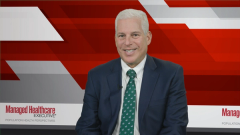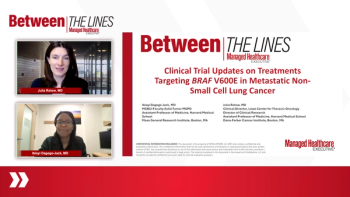Overview of Multi-Drug Resistant (MDR) HIV
Dr McCray shares an encounter with “Patient X”, highlighting the barriers and challenges associated with MDR therapies in HIV treatment.
Episodes in this series
Eugene McCray, MD: Multidrug-resistant HIV, or MDR HIV, is defined as HIV that contains mutations that cause reduced susceptibility to multiple antiretroviral drugs. MDRHIV can cause treatment failure, and the most common resistance that we see in MDR HIV [is] resistance to the non-nucleoside reverse transcriptase inhibitor–based ART [antiretroviral therapy] regimens and then the PI [protease inhibitor]-based regimens.
There are really 2 major types of mechanisms, but there’s a third as well. There’s what we called transmitted, or acquired transmitted, HIV resistance. There’s something called acquired or treatment-emergent HIV resistance. The World Health Organization also uses the term treatment HIV drug–resistance, and I’ll talk a little bit about each of those. Transmitted resistance is when the ARV [antiretroviral] drug–naïve patients––people with no history of ARV exposure––acquire a strain from someone that’s already resistant to certain antiretroviral drugs. In other words, transmitted HIV drug resistance occurs when previously infected individuals are injected with the virus that has drug-resistant mutations. Now, the second type of drug resistance is what we call acquired or treatment-emergent drug resistance, and when you hear most physicians talk about it, they’ll use the term acquired drug resistance. That occurs when the drug-resistant strain of HIV emerges while a person is actually taking antiretrovirals. In other words, the HIV-1…replicates and mutates in the presence of suboptimal or inconsistent levels of ARVs.
The third category of drug resistance is what we call pretreatment HIV-drug resistance. That’s usually detected among ARV drug–naïve people that are initiating treatment or people with prior ARV drug exposure that are initiating or re-initiating first-line ARTs. Let me talk a little bit more about that. It can result from either transmitted or acquired drug resistance. Pretreatment HIV may have been transmitted at the time of infection, or it may be acquired from previous ARV-drug exposure, such as a woman who might have been exposed to antiretroviral drugs for the prevention of mother to child transmission of HIV. It can also be associated with individuals who are reinstating first-line ART after a period of what we call treatment interruption. It can also occur among young people who have been receiving PrEP, or pre-exposure prophylaxis.
Transcript edited for clarity.
Newsletter
Get the latest industry news, event updates, and more from Managed healthcare Executive.

























































